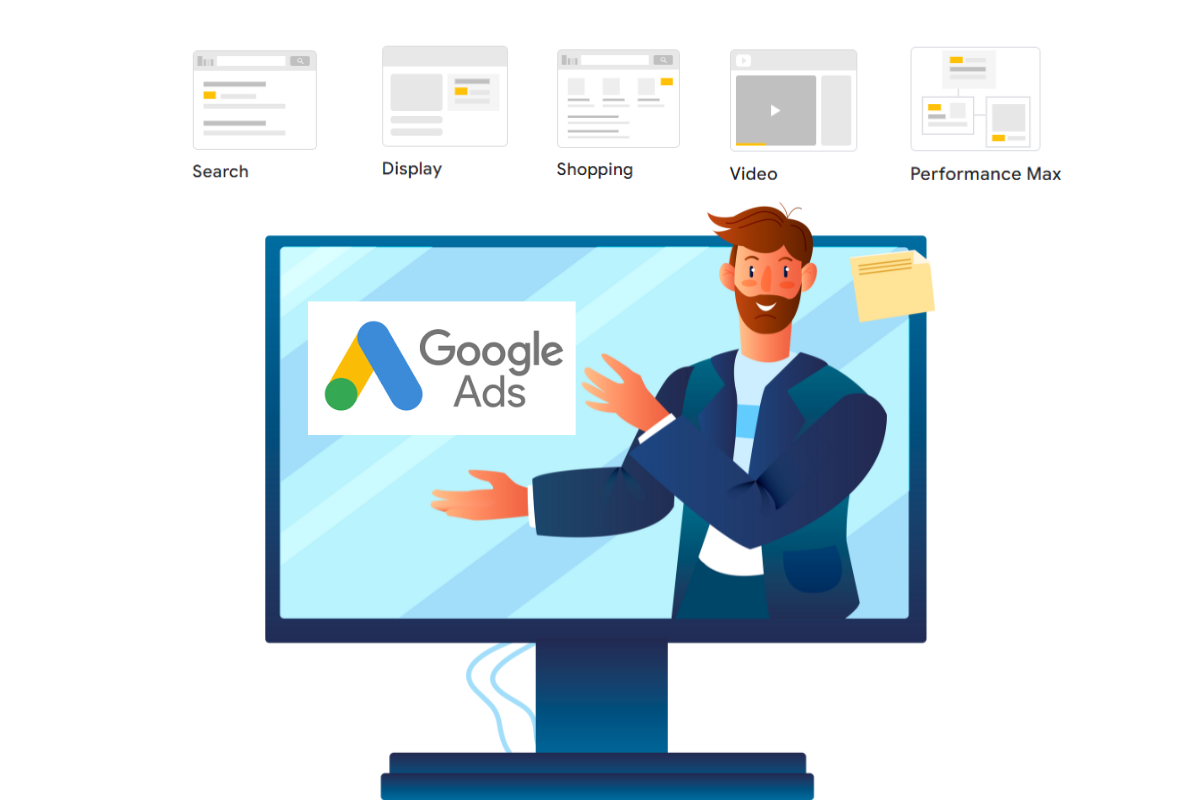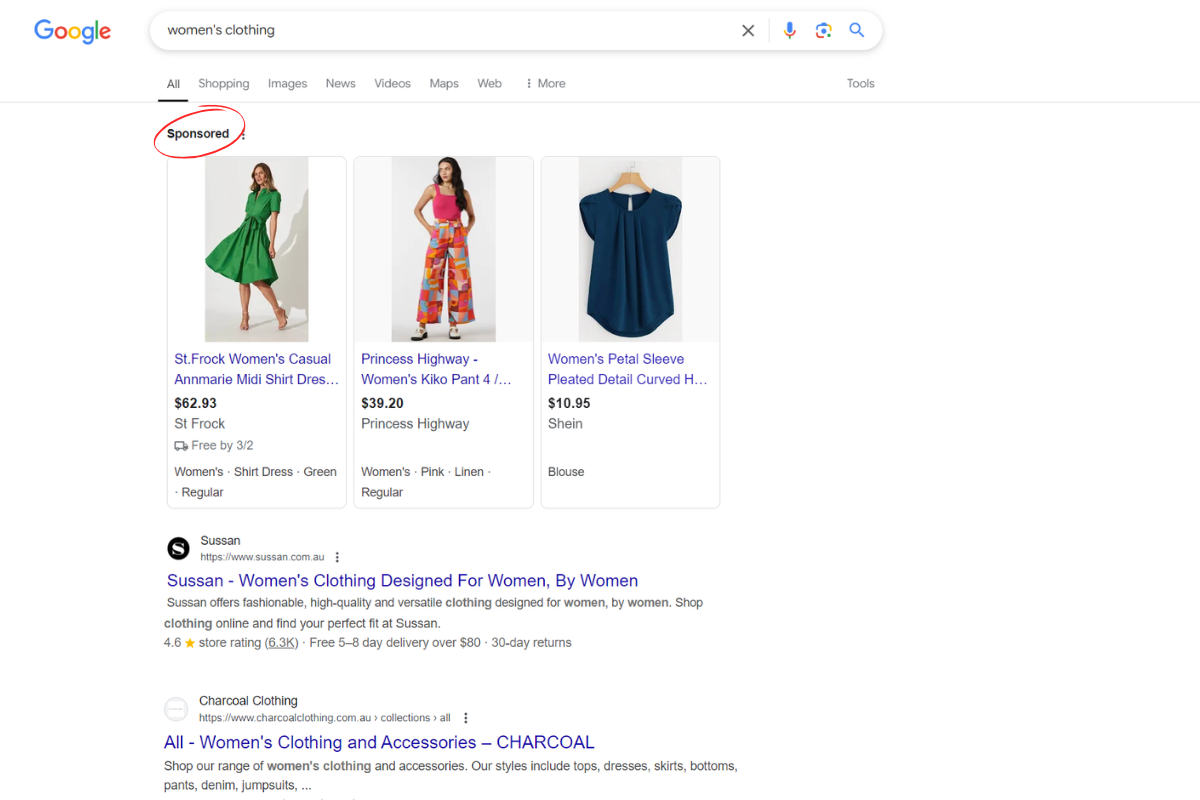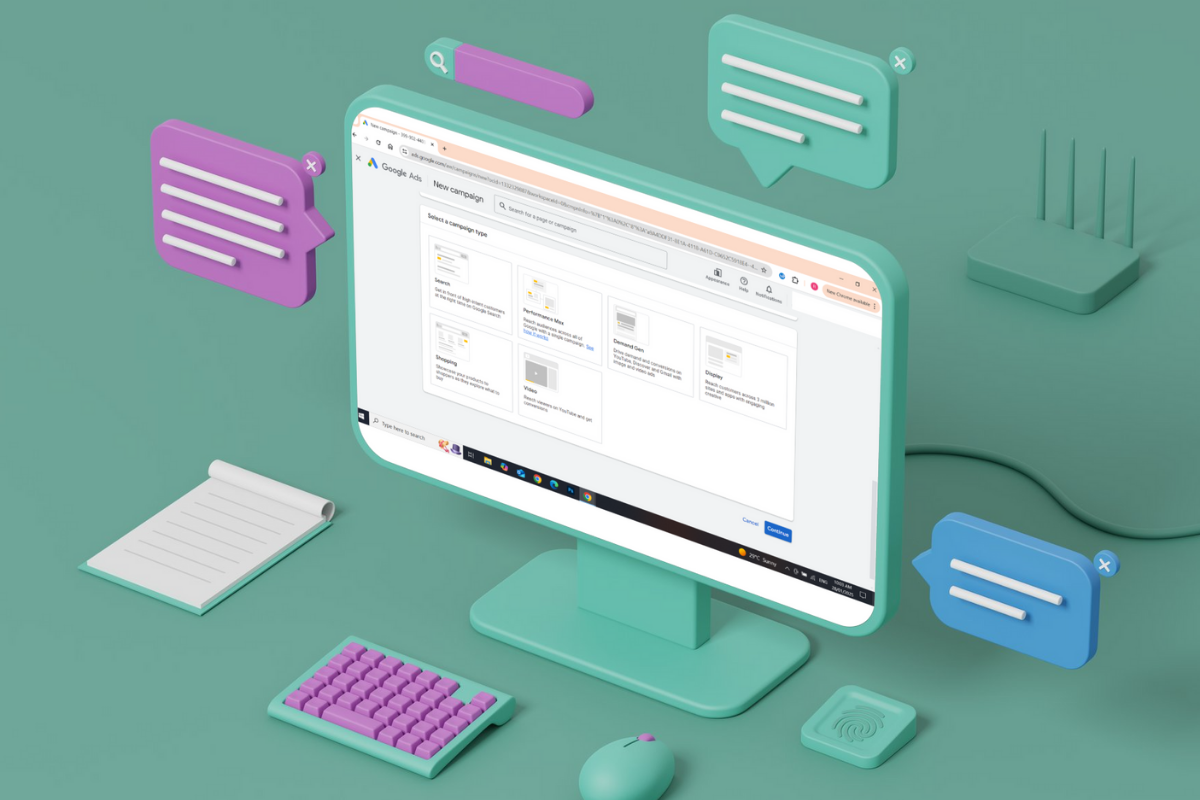Connect
Address
Office 4/184 Pier St,
Perth WA 6000, Australia
Perth WA 6000, Australia
Let’s explore the five main types of Google Ads campaigns—what they are, how they work, and how to use them to your advantage. If you want to get cracking on one of your own, get in touch with Yikes! Marketing

Google Ads is like a Swiss Army knife for marketers—it’s versatile, powerful, and designed to help you tackle almost any advertising challenge. But here’s the catch: with so many campaign types to choose from, it can feel like you’re staring at a menu in a fancy restaurant, unsure of what to order.
The truth is, each type of Google Ads campaign serves a unique purpose. Some are perfect for driving sales, others are all about building brand awareness, and a few cater to businesses looking to capture leads or re-engage customers. The trick? Knowing which one works best for your goals.
Let’s explore the five main types of Google Ads campaigns—what they are, how they work, and how to use them to your advantage. If you want to get cracking on one of your own, get in touch with Yikes! Marketing.
When you think of Google Ads, Search Campaigns are probably the first thing that comes to mind. These are the text ads you see at the top of search engine results when you type in something like “best sushi near me” or “affordable SEO services.”
How it works:
Search Campaigns allow you to bid on keywords relevant to your business. When someone searches for those terms, your ad competes in an auction to appear in the search results.
Example:
You’re a florist in Sydney, and you create a Search Campaign targeting “same-day flower delivery Sydney.” Someone searching for this term is ready to buy, and your ad pops up right when they need you.
Why use it?
Search ads have a knack for reaching people at the exact moment they’re looking for what you offer. In fact, 75% of users say search ads make it easier to find the information they’re looking for.
If Search Campaigns are all about intent, Display Campaigns are about visual discovery. These are image or banner ads that appear across Google’s Display Network, which includes over 2 million websites and apps.
How it works:
Display ads are shown to users while they’re browsing websites, watching YouTube videos, or scrolling through apps. They’re not necessarily looking for your product or service, but your ad can grab their attention and plant a seed.
Example:
A local gym runs a Display Campaign showcasing high-energy photos of its classes. These ads appear on fitness blogs, news sites, and mobile apps frequented by health-conscious users.
Why use it?
Display ads are a cost-effective way to get your brand in front of a broader audience. Plus, they’re excellent for remarketing—reminding people who’ve visited your site but didn’t convert to come back.
If you’re running an e-commerce store, Shopping Campaigns are your secret weapon. These ads showcase your products directly in search results, complete with images, prices, and even reviews.
How it works:
Shopping ads pull product data from your Google Merchant Center feed and display it to users searching for specific items. These ads often appear above or to the right of search results.
Example:
An online shoe retailer creates a Shopping Campaign targeting “women’s running shoes.” When a user searches for this term, ads featuring their top products—including images, prices, and star ratings—appear front and centre.
Why use it?
Shopping ads deliver high-quality leads. According to Google, Shopping Campaigns generate a 26% higher conversion rate than text ads.

Video Campaigns bring your brand to life with ads on YouTube and across the Google Video Partners network. Whether you’re telling a story, showing off a product, or sharing customer testimonials, video ads are all about grabbing attention in a way static ads can’t.
How it works:
You create a video ad and choose where it appears—before, during, or after YouTube videos, or even as skippable ads in other apps and websites.
Example:
A skincare brand runs a Video Campaign showing a 15-second demo of its best-selling serum. The ad appears before makeup tutorials on YouTube, targeting beauty enthusiasts.
Why use it?
Video is powerful: 68% of YouTube users say they’ve made a purchase after watching a brand’s video. Plus, video ads give you the chance to tell a story and connect emotionally with your audience.
Performance Max is Google’s newest campaign type, designed to simplify advertising by combining Search, Display, Shopping, and Video ads into a single, AI-driven campaign.
How it works:
You provide Google with your assets—like headlines, images, and videos—and the platform’s AI takes over, serving your ads across all Google networks.
Example:
A travel agency creates a Performance Max Campaign with assets for flight deals, hotel packages, and travel insurance. Google automatically places their ads on YouTube, Gmail, Google Search, and more, targeting users at different stages of their journey planning.
Why use it?
Performance Max simplifies campaign management and uses Google’s AI to optimise your ads in real-time. Advertisers using Performance Max have reported a 13% average increase in conversions compared to single-channel campaigns.
Choosing the right Google Ads campaign type depends on your goals. Let’s see if the answers to these questions fit what you’re looking for:

Steele from Yikes! Marketing sums up Google Ads campaigns for new users: “Google Ads campaigns aren’t one-size-fits-all. Each type has its strengths and purpose, so the key is to align your campaign type with your business objectives. And don’t be afraid to experiment! A mix of campaigns can often deliver the best results.”
Need help creating or managing your Google Ads campaigns? At Yikes! Marketing, we live for this stuff. Let’s chat about how we can craft a strategy that drives real results for your business. Reach out today!
